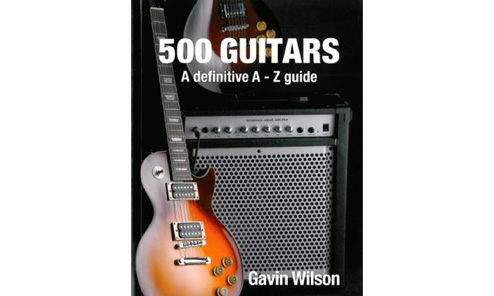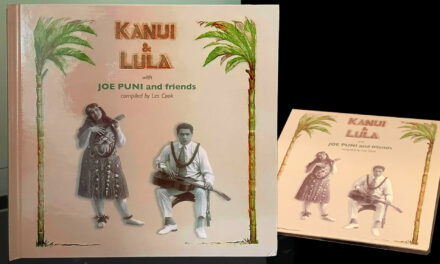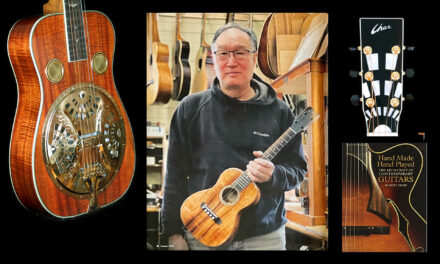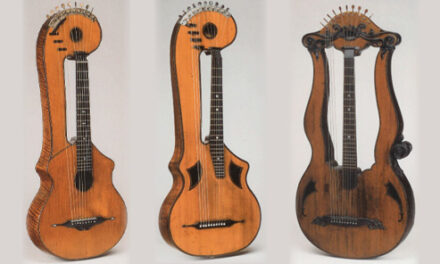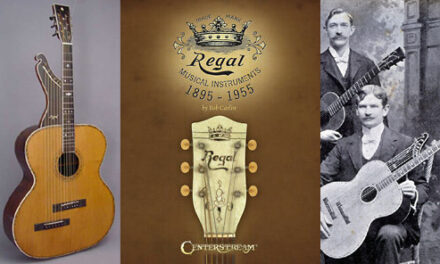Jaci and I typically wander through Borders or Barnes & Noble (or both) at least once a month. I’ll sit and browse through the Guitar mags that I don’t subscribe to, my HG radar on the alert for any blips, and then do a quick stroll through the “Bargains.” It’s amazing how often new guitar “encyclopedias” and various picture books continue to come out! Often, I’m completely unaware of them – they seem to just show up out of the blue in these bargain racks.
They used to be mostly rehashes of the (originally pretty nice) Chinery Collection – same photos and general info. Now I’m seeing lots of new author names (most of which I’ve never heard of). So many that a couple recent books (inexpensive and well-illustrated) I didn’t even pick up – no HGs, and I have zero remaining shelf space.
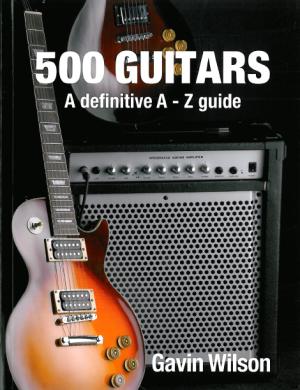
One I snagged because it was only $4.97 and an inch thick, promising “500 Guitars.” And not just any 500, but “the definitive guide to the guitar, detailing every significant make.” I didn’t actually count the entries, but it would’ve been nice if it was actually illustrated. Sporadic photos, of varying quality (Fred Carlson sympitar – nice, Doolin 6-string – terrible, and we know Mike coulda sent them a better photo!). Instead, we get 3-to-a-page, huge-text entries of makers, as random as I’ve ever seen.
Harps? Yes, plenty. None are shown, and seriously, what is the point of a short, sloppy blurb about an obscure, one-of-a-kind, eye-candy specimen with no reference photo? A Dyer and Knutsen entry aren’t too damaging – unlike most recent editors, they at least skimmed Bob Hartman’s last book (no, there are no credits or sources, did you really expect any?). They mention the Dyer’s contracting Larsons to build them in 1902 (future writers, just add the “circa” next time, will ya?) – but then do a bit of damage stating (in both blurbs) that prior to 1902, Dyer had contracted Knutsen to build their instruments. As all Knutsen Archives readers know, Knutsen built and labeled his instruments purely on his own; Dyer just distributed them (in some as-yet-undetailed way). They also mention “5 to 7” basses for both the Dyer and Knutsen (which is not quite accurate for either). For Knutsen, they also mention his “fanned frets (pre-Novax!)” when we all know they are not fanned in the least, but only slightly slanted in the same direction (and advertised accurately by Knutsen as such).
Every guitar book writer has gotten the Bohmann internal “sympathetic tone rods” wrong…this book screws up the harp guitar in a new way. While they first say that (generally) a harp guitar’s strings can “either function as sympathetic strings or be plucked as on a harp,” they specifically state that the Bohmann’s 12 extra strings are sympathetic and not plucked. When they next state that the push-button damping bar is used to mute these strings, it’s clear that they mixed up the bass strings with the sympathetic metal tone rods inside the body (see the two 12-bass specimens on The Harp Guitars of Joseph Bohmann).
Other HG entries? They list the House of Stathopoulo (probably got right off the Epiphone site), a Hoffman harp guitar (reads more like an ad than an encyclopedia entry), and – among a whole slew of really obscure and random guitars from German Rainer Krause’s private collection (none pictured) – his Schenk lyra-form harp guitar.
In this list of the most important 500 guitars in the world, our own Mike Doolin warrants two entries (good for him!) – one for the 6-string and one for the 20-string harp guitar (presumably referring to the original LeDonne specimen, though not pictured).
They have an entry for a Lacôte 7-string, but picture a 6-string. A Décacorde entry simply misspells Carulli’s name. They don’t screw up the Harpolyre entry too badly, nor a Scherzer 10-string.
In a nutshell: I have no idea how the author/editors found and chose this strange assembly of guitars – they seem to have lots of friends in the boutique electric market, for one thing. Many of these are shown in some nice color photos, and several are pretty cool. For this reason alone, I think the book is worth more than $4.97. I’d say $4.99 at the very least.
Magazines found that same day (this was a month ago) I already mentioned on the Forum. Last week I saw that Premier Guitar (from England) has a bit more on the Montreal Guitar Festival, with a photo of HG-newbie Ken Bonfield playing Alan Carruth’s ultra-interesting recent invention. These two will be at HGG8, and I, for one, cannot wait to steal – er, I mean, try out – this clever (if nonsensical) instrument…

